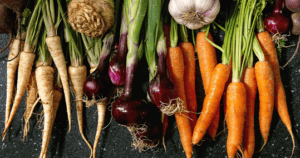In our previous installments, we journeyed through the dizzying heights and crushing lows of The South Sea Crash and Tulip Mania, navigated the tumultuous waters of The Panic of 1873, and danced through the exuberance of The Roaring 20s. Each era, marked by its unique brand of collective euphoria, eventually gave way to despair. This brings us to a pressing question: With all our advancements and lessons from the past, have we truly learned anything?

The Nature of Modern Crowds
In the Digital Age, technology, with all its marvels, has also amplified our collective madness. Information now travels at the speed of light, reaching corners of the world in mere seconds. But there’s a catch. Social media, while connecting us, often acts as an echo chamber, reinforcing our beliefs and sometimes blinding us to broader perspectives. Our world is more connected than ever due to globalization. An economic hiccup in one country can send shockwaves across continents. The butterfly effect is real, and in our global economy, the flutters are felt far and wide. With our sleek gadgets and sophisticated algorithms, it’s tempting to believe we’re immune to past mistakes. But are we?

Modern Examples of Crowd Madness
At the turn of the millennium, the Dot-com Bubble presented the internet as the new frontier. Everyone wanted a piece of the digital pie, leading to inflated valuations and speculative investments. But bubbles burst, and when this one did, it left a trail of bankruptcies and shattered dreams. The 2008 Financial Crisis showcased the allure of owning a home. Subprime mortgages made that dream accessible to many. But when the housing bubble burst, it triggered a global recession, reminding us of the domino effect in our interconnected world.
Cryptocurrency mania, with Bitcoin and its digital siblings, promised a financial revolution. While they’ve indeed changed the landscape, the wild speculations and volatility remind us of the potential dangers lurking in the shadows. The GameStop saga and the meme stock phenomenon are testaments to when online communities flexed their collective muscle, stock prices soared in unprecedented ways. It’s a testament to the power of the crowd but also a cautionary tale of its unpredictability.

The Psychological Underpinnings
Ah, the age-old desire to be part of the action. Fear of Missing Out (FOMO) is far from new, but it’s a potent driver of modern speculative bubbles. Every era believes “this time is different.” Overconfidence can sometimes blind us to glaring warning signs. We’re social creatures, and there’s comfort in numbers. But following the crowd without questioning can lead us off a cliff. Media, in its various forms, can amplify trends, sometimes creating self-fulfilling prophecies. Ultimately, the variables of markets change, but the psychology of crowds and euphoria remains the same. It’s simply up to us to learn the lessons of history to avoid the same mistakes going forward.

The Consequences of Not Learning
Economic Repercussions: History has shown us the painful aftermath of economic bubbles – recessions, job losses, and financial ruin. When bubbles burst, they don’t just affect the speculators but ripple through the entire economy. Small businesses may find their credit lines tightened, leading to layoffs or even closures. Homeowners might find the value of their primary asset plummeting, while still owing significant amounts on their mortgages. Pension funds, which many rely on for their retirement, can see their portfolios devalued, jeopardizing the futures of countless individuals. The broader economy can stagnate, leading to reduced consumer spending, which in turn affects businesses and can lead to further economic contraction.
Societal Impact: When trust in institutions erodes, society becomes polarized, making collective action challenging. This mistrust isn’t limited to financial institutions alone. As people lose faith in the systems meant to protect them, they might turn to alternative sources of information or fringe groups, leading to the spread of misinformation. This polarization can manifest in various ways, from protests to a general apathy towards civic duties like voting. A divided society struggles to find common ground, making it difficult to implement policies that benefit the greater good. Moreover, such divisions can be exploited by opportunistic entities, further deepening societal rifts.
Personal Toll: Beyond the economic, the mental health crises and shattered dreams are the silent casualties of these episodes. The stress of financial instability can lead to a myriad of health issues, from sleep disorders to more severe conditions like depression. Families can feel the strain, with financial woes often leading to tensions and breakdowns in relationships. Young adults, just starting on their financial journeys, might become disillusioned, developing a deep-seated mistrust of financial systems. The emotional and psychological scars left by financial crises can last a lifetime, affecting not just the individuals directly impacted but also future generations who grow up in their shadow.

Lessons for the Future
Financial Education: Knowledge is power. Arming individuals with financial literacy can be our first line of defense. As the complexities of the financial world grow, understanding the basics of savings, investments, and the principles of risk and reward become paramount. Schools and institutions should prioritize financial education from an early age, ensuring that individuals are equipped to make informed decisions. Workshops, online courses, and community programs can play a pivotal role in demystifying financial jargon and concepts, making them accessible to all.
Regulatory Measures: Innovation is vital, but so is protection. Striking a balance is crucial. As we’ve seen with the rapid rise of cryptocurrencies and digital assets, new financial instruments can emerge and gain popularity almost overnight. Regulatory bodies need to be agile, adapting to these changes to ensure that investors are protected from potential scams and market manipulations. Collaboration between countries can also help in setting global standards, ensuring that there are no regulatory blind spots where malpractices can thrive.
Individual Responsibility: In the age of information, skepticism and due diligence are more important than ever. With the vast amount of information available at our fingertips, it’s easy to get swayed by the loudest voice rather than the most accurate one. Individuals should cultivate a habit of cross-referencing information, seeking expert opinions, and being wary of “too good to be true” offers. Investing time in understanding the nuances of any financial decision, be it taking a loan or investing in a new venture, can save a lot of heartache in the future.
Collective Memory: Remembering our past is our best bet to avoid repeating its mistakes. Societies should prioritize the documentation and teaching of financial crises, bubbles, and market behaviors as cautionary tales. Museums, documentaries, and even popular media can play a role in ensuring that the lessons from past financial misadventures are not forgotten. By understanding the triggers and consequences of past events, we can be better prepared to identify and mitigate potential risks in the future.
Rising Above the Madness of Crowds
The cyclical nature of crowd madness is crystal clear and yet it will inevitably return in new ways. While the players and settings change, the plot remains eerily familiar. It’s a call to action for each one of us. The future is uncertain, but if you remain vigilant, informed, and cautious, these lessons of history will serve you greatly. After all, history is a great teacher, but only if we’re willing students.
Have a great weekend!
Source: Ballentine Capital Advisors
Golf Tip of the Week
Are You A Bad Putter? This Key Putting Stat Could Explain Why

A few weeks ago at Royal Liverpool, Brian Harman did something truly astonishing.
Harman didn’t just win the Open Championship, but did so with a whopping 11.57 SG: Putting. To put that in context, it means Harman gained nearly 12 shots more than the average player in the field, and almost double the next-best putter at the Open.
When you think of a number like that, you’d expect Harman to be dropping-in monster putts from all over the place. But interestingly, it was actually the opposite. The longest putt Harman made all week was from 40 feet.
Instead, Harman arrived at that number by running up the margins from inside 10 feet. He had 60 putts from inside 10 feet all week — and he only missed one.
Which brings us to the first statistic we’re highlighting from our newly-launched How Do You Compare interactive (which you can check out right here!)
The amateur golfer data you see here is courtesy of our friends over at Arccos, and as you can see, there’s a huge dropoff between pros and the rest of us: About 20 percent, from the PGA Tour average to the average scratch golfer. There’s a slightly smaller dropoff between stats and single digits, and then it stays pretty stable.
You’re missing too many 6-9 foot putts
The reason pros are so good from this range is because, basically, pros obsess over it. The rest of us don’t spend the same amount of time practice them, and the time we do have is usually spent on the driving range, hitting 7-irons.
But the pros realize this is one of the precious few areas where you can feasibly gain an edge on your peers. Here’s why:
- Statistically, pros are more likely to make a putt than miss it starting at around seven feet.
- Then, from seven feet to about 10 feet, it’s a coin flip.
- From outside of that range, you’re in an ocean of two-putt territory.
Simply put, 6-to-9 feet are the putts that — if you’re good at them — you can feasibly make a lot of. If you’re bad, you can also miss a lot of them. There’s no in between. And to raise the stakes even more, they also tend to be the really important ones. The birdie opportunities and the par savers. The putts to win the hole that your opponent isn’t going to give you.
With each one you do make, the further you’ll pull away from your peers. So get practicing those mid-range short putts!
Tip adapted from golfdigest.comi
Recipe of the Week
Chicken Tortilla Soup

4-6 Servings
Ingredients
- 2 tablespoons vegetable oil
- 1 small onion, diced
- 2 tablespoons minced garlic
- 2 jalapenos, finely diced
- 6 cups low-sodium chicken broth
- One 14.5-ounce can fire-roasted diced tomatoes
- One 14.5-ounce can black beans, rinsed and drained
- 3 chicken breasts, boneless and skinless
- 2 limes, juiced, plus wedges for garnish
- Salt and freshly ground black pepper
- 1 cup roughly chopped fresh cilantro leaves
- One 8-inch flour tortilla, grilled, cut into thin strips
- 1 avocado, pitted, sliced
- 1 cup shredded Monterrey cheese
Instructions
- In a large saucepan heat the vegetable oil. Add the onions and cook for 2 minutes. Once the onions have softened add the garlic and jalapenos and cook for another minute.
- Pour the chicken broth, tomatoes, and beans into the pot and bring to a boil.
- Once at a boil lower heat to simmer and add your chicken breasts. Cook the chicken for 20 to 25 minutes. Once chicken is cooked remove from pot. When cool enough to handle shred it and set it aside.
- Add lime juice and fresh cilantro to the pot.
- In a serving bowl add a mound of shredded chicken. Ladle soup over chicken and top with a lime wedge, grilled tortilla strips, avocado slices, and cheese.
Recipe adapted from Foodnetwork.comii
Health Tip of the Week
14 Fruits and Vegetables You Need to Eat This Fall

Autumn Harvest
Cranberries and gourds have had a nice run, but it’s time for them to share the spotlight with some other fall fruits and veggies. You may have to look outside your local grocery store for a few of them, but they’re worth the trip off the beaten path.
Persimmons
These tree fruits came to California via China and Japan in the 19th century. Most are best eaten when they’re still crispy. But one kind called hachiya, grown mostly in Japan, is meant to be eaten only after the flesh gets soft as jelly.
Fennel
You can use the leaves as an herb — the aroma and taste are like licorice without the sweetness. And you can roast the roots, or “bulbs,” with other root vegetables — turnips, carrots, rutabaga, parsnips — for a perfect fall side dish.
Endive
Though often yellow, white, or purple in color, it’s one of the great varieties of peppery salad “greens” harvested in the fall. That’s when they begin to soften and sweeten. Slightly bitter, with a refreshing crunch, one kind of endive has leaves that are perfect to use as edible serving spoons for appetizers.
Huckleberries
They look like blueberries, but they’re rarer and sweeter. The most sought-after ones grow in the moist environment of the Pacific Northwest. If you’re picking them yourself, remember they’re also a favorite of bears.
Quince
This fruit is often used in jellies and jams, including membrillo, a very thick jam the Spanish eat with cheese. Quinces are related to apples and pears but better able to survive extremes of temperature and drought.
Brussels Sprouts
Also known as “the vegetable you used to hate,” Brussels sprouts got a makeover when American chefs started roasting them to a delicious crisp with olive oil or pan-frying them with caramelized onions. Now they have a new taste and a new stylish image to match.
Rutabaga
This sweet, nutty root vegetable is best harvested in the fall and is great to bake together with fennel and turnips for a delicious fall and winter side dish.
Japanese Sweet Potatoes
Also known as oriental potatoes, these have a yellow-white flesh and purple skin, unlike their more traditional bright-orange cousins. They’re also sweet, but they have a unique flavor and are packed with healthy vitamins and nutrients. In Japan, they’re used to make liquor as well.
Jujube
This unusual fruit grows on trees and may be eaten fresh, in early fall, just as it turns from green to brown. It also dries on the tree without any outside help. The result is a hardier form of the fruit that lasts much longer and has a flavor similar to dates, though not as sweet.
Pomegranates
The beautiful ruby red seeds of this fruit are delicious on their own, on top of a salad, or mixed with yogurt. They’re also used in Persian cooking to make sauces, syrups, and spectacular savory stews.
Asian Pear
Firm and crisp like an apple, this fruit has a pleasant, sweet flavor. It’s delicious on its own or with some yogurt and is a great addition to salads as well. With careful handling, it can have a long shelf life.
Grapes
The traditional fall harvest of grapes is cause for celebration for winemakers across the globe. But, of course, grapes are good to eat fresh as well — on their own or added to dishes. Along with walnuts, they can liven up traditional chicken salad.
Pumpkin
More than a Halloween decoration, this gourd can be healthy and delicious. And not just in pie, either — it can be pureed for soup, roasted for a side dish, and even made into a milkshake.
Shallots
Like leeks, onions, and garlic, shallots are praised for their mild, sweet flavor, especially when cooked. Try them in recipes in place of onions, or raw in salads and marinades.
Tip adapted from WebMD.comiii
Copyright (C) 2021. Ballentine Capital Advisors. All rights reserved.
Our mailing address is:
Ballentine Capital Advisors
15 Halton Green Way
Greenville, SC 29607
Disclosure:
Ballentine Capital Advisors is a registered investment adviser. The advisory services of Ballentine Capital Advisors are not made available in any jurisdiction in which Ballentine Capital Advisors is not registered or is otherwise exempt from registration.
Please review Ballentine Capital Advisors Disclosure Brochure for a complete explanation of fees. Investing involves risks. Investments are not guaranteed and may lose value.
This material is prepared by Ballentine Capital Advisors for informational purposes only. It is not intended to serve as a substitute for personalized investment advice or as a recommendation or solicitation or any particular security, strategy, or investment product.
No representation is being made that any account will or is likely to achieve future profits or losses similar to those shown. You should not assume that investment decisions we make in the future will be profitable or equal the investment performance of the past. Past performance does not indicate future results.
Advisory services through Ballentine Capital Advisors, Inc.
i https://www.golfdigest.com/story/short-putting-stats-tips-golf-digest
ii https://www.foodnetwork.com/recipes/chicken-tortilla-soup-recipe-1939403
iii https://www.webmd.com/food-recipes/ss/slideshow-fall-fruits-vegetables


